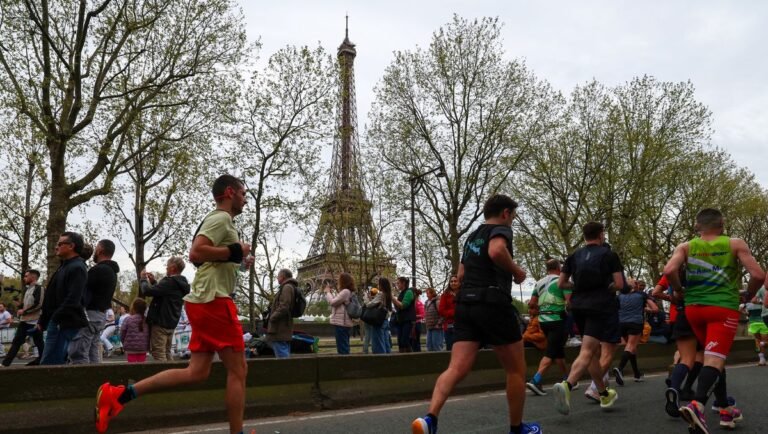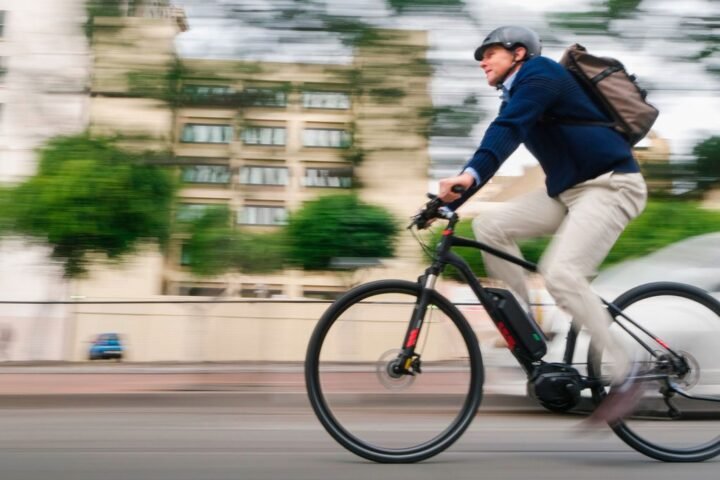Taking place in springtime in one of the most beautiful cities in the world, the Paris Marathon is one of the world’s best marathons with a route that takes runners past many recognizable sights including the Louvre, Notre Dame, the Palais Garnier, the Château de Vincennes and the Eiffel Tower. The race starts and finishes close to the Arc de Triomphe and sets off on the magnificent Avenue des Champs Elysées. It also takes runners through the two huge parks at the east and west extremities of the city, and along the north bank of the river Seine.
One of the best things about the Paris Marathon is that there is no ballot and there are lots of places. Around 54,000 runners started the Schneider Electric Paris Marathon in 2024 and similar numbers are expected in 2025. But it’s worth securing your place sooner rather than later as the race tends to sell out well before the closing date and you’ll pay less if you register early.
It’s a great first marathon (it was my first, in 2010)—usually around a third of the runners are first-timers—and one worth traveling to—around a third are international entrants. As well as the incredible atmosphere and stunning architecture rolling past, my Paris Marathon highlights included firefighters spraying hoses over the sweaty runners, the adrenaline rush of thundering through tunnels, the cool tranquil stretches in the Bois de Vincennes and the enthusiastic crowds shouting “Allez Camilla!” just when I needed it most. I still regret not going for the wine and cheese on offer around the 35km marker, though.
When is the Paris Marathon 2025?
The next Paris Marathon will be held on April 13, 2025.
How do you enter the Paris Marathon 2025?
Use the registration form to sign up for the Paris Marathon 2025. An early bird or “first price” single entry costs €130. If you’re planning to run with someone else you can get a discount by signing up as a duo, with entries costing €120 each.
What’s the route of the Paris Marathon 2025?
While the 2025 route has not yet been confirmed it is very likely to follow the usual route, which hasn’t changed significantly since I ran it in 2010 and 2011. The start takes place on the Avenue des Champs Elysées and, with the Arc de Triomphe behind them, runners head east into the center of Paris, taking a loop around the Opera area before passing the Louvre and continuing along Rue de Rivoli and out east towards the beautiful green space of the Bois de Vincennes at around the 10K marker.
After a 10km loop in this park you’ll head back west through the east of Paris to the 25km marker where you’ll see Notre Dame and will continue along the banks of the Seine, sometimes dipping through road tunnels—watch out for the uphill ramps as you emerge.
You’ll follow the river right through the city, and will get an excellent view of the Eiffel Tower on the other side of the river, before peeling off towards the Bois de Boulogne in the west which you’ll reach at the 35km marker. The final few kilometers take you through the grand avenues of western Paris and back to a triumphant finish in front of the Arc de Triomphe.
Is the Paris Marathon route flat?
The route is undulating, with a total of 269m (882ft) elevation gain, including short ramps up from underpasses on the Voie Georges Pompidou and an incline that’s challenging for tired legs around kilometer 39.
Are there water stations at the Paris Marathon?
Refreshment stations are placed roughly every 5K, with water available and, in 2024, sustenance in the form of bananas, dried fruit, sugar cubes, crackers and pretzels. Toilets are located close to each refreshment station. No sports drinks or gels are provided during the race, so you’ll need to bring your own if that’s what you’re used to.







